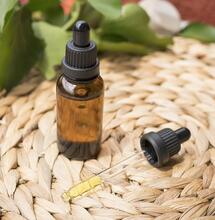Californian Cannabis Farms Plagued by Virus

A quick-spreading pathogen is believed to have affected more than 90% of California cannabis farms. The stealthy invader grows invisibly on plants for months before spoiling crops just as farmers prepare to harvest. The outbreak could cost the national cannabis economy billions.
The hop-latent viroid (HLVd) was first detected in hop plants during the 1980s. Cannabis shares same terpenes with hop plants; the two groups of plants are close relatives. The viroid weakens cannabis plants, reducing their weight and yield output by up to 30%. The pathogen has also been found to affect the amount of THC.
The virus could be related to numerous cases of damaged crops over the last ten years. The harm from HLVd only occurs at the end of the plant's lifecycle, before harvest; thus, it has easily evaded detection until now.
How it spreads? One logical route is cannabis "mother" plants that serve for cuttings and produce hundreds of new plants. Since mother plants are used in cultivation before they reach an advanced stage of the lifecycle, they could continue spreading the virus for months without showing any signs of distress.
HLVd was first detected on Californian cannabis farms in 2019 in a sample traced to a Santa Barbara farm. By 2021, it was assumed to have spread to at least 90 percent of the state's farms. Scientists also claim that the pathogen has spread to other states and possibly even Europe. Recent research cites the viroid as the biggest concern to cannabis farming.
Purple Genetics, an Oakland-based startup that breeds and cultivates weed phenotypes, has recently issued a new HLVd test that can be used on farm sites and that delivers results on whether a crop is infected within hours. Previously, if someone suspected an HLVd outbreak on their crops, they had to mail samples to a lab and wait for days or weeks to receive the results.
"By the time you get the results back, you may have cut and sold that plant," says Ali Bektaş, CEO of Purple City. "So there is a real need for an onsite diagnostic test for hop-latent viroid."
Purple City has reportedly utilized an approach called LAMP to develop the new test. The same method gained much traction during the Covid-19 crisis. Unlike PCR testing, which requires extensive lab equipment and trained personnel to deliver the result, LAMP relies on cheap equipment and can be handled by almost anyone.
LAMP technology transformed Covid testing, so Bektaş thought to try the method on the new viral threat to cannabis. Working at the Oakland Gemoics Center, he and his team developed a simple-to-use LAMP test for HLVd that allowed quick testing of multiple crops and obtaining the results in a matter of hours. The cost per test is only ten bucks.
Cannabis farmers quickly accepted the new test. "We weren't even advertising it, but people would hear about it, and they would start asking us if they could also use it," says Bektaş.
While a test would not solve the issue, it at least helps slow down the spread of the viroid. Using clean tools and instruments when handling cannabis also helps prevent the spread of various infections.
Cannabis breeders have not been able to engineer cannabis cultivars fully resistant to HLVd thus far. Some tissue-cultured plants are sold as virus-free, but that doesn't mean they are safe from infections later on. The next industry challenge is creating cannabis cultivars with total immunity to viroids like HLVd. It certainly isn't an easy task, but it may be necessary to prevent more losses in both crops and money.















